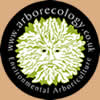Construction Sites | Helping Trees Survive Development | Tree Friendly Excavation | Tree Roots & Development Case StudyLike it or not, trees are a central feature of development sites today, following the guidance and recommendations of the British Standard 5837 there is considerable emphasis on their protection. Tree root protection areas (RPAs) can extend as far as 15m from the trees trunk and in some cases further, where the rooting environment of the tree is considered to be asymmetric. However, the British Standard 5837 ‘Trees in Relation to Construction, Recommendations’ 2005 (BS 5837:2005) offers developers considerable opportunities to build within the RPAs of retained trees, by following the advice of an arboriculturist. The BS 5837:2005 emphasises that “the part of the tree most susceptible to damage is the root system, which, because it is not immediately visible, is frequently ignored” and that “damage to, or death of the root system affects the health, growth, life expectancy and safety of the entire tree.” This is why the emphasis on tree protection considers such a large area around the base of the tree, in an effort to retain as many roots as possible. However, when the tree survey has been completed and the designated RPAs have been plotted onto the topographical survey, it can appear that there is very little space left to be developed, and that the presence of trees has precluded effective and economic use of the site. This is not the case and the following case study has been produced by ArborEcology to illustrate the opportunities that are available for construction work within the RPAs of retained trees. Case Study : Development Within the Tree Root Protection Area The brief was to explore the proposed development footprint to see what roots were actually present and to assess the likely impact of the extension. Assuming the presence of roots, exploratory trenches were excavated to determine practicality of extension within the RPA, whilst ensuring the continued health of the retained trees. A site meeting was then held with the tree officer, architects and client to discuss the result. It appeared that the tree roots were merely ‘bridging’ the area of hard surfacing in search of the more favourable rooting conditions outside of the designated RPA. This information allowed the area utilised by the trees to be sufficiently protected whilst allowing a compromise to be met with consideration to the size and position of the extension. An agreement could be reached where the development is allowed within the RPA, on the basis that the area of consideration given to tree roots is extended to include the places where the tree is clearly gaining most benefit. When planning permission is granted for the development, the location of the roots can be passed onto the engineers so they can be considered and appropriately avoided during foundation design. Informing the design and planning process in this way, with meaningful exploration work to find out where roots actually are can enable very successful and sympathetic juxtaposition of new buildings and retained trees. Where it is intended to undertake demolition or construction operations within the root protection area, precautions should be taken to maintain the conditions and health of the root system and in particular to: a) prevent physical damage to the roots during demolition or construction (such as by soil compaction of severing);Trees that have good health and stability are well adapted to their surroundings. Any development activity which affects the adaptation of trees to a site could be detrimental to their health, future growth and safety. Andrew Cowan, ArborEcology Click here to download this resource. Read more about how the AirKnife works an idea of where it can be used: construction sites, pipeline trenching, tree health investigations, remedial mulching and our tree root research. |
 |
“To interpret observations made of natural things it is essential, |  |
| Website by Digital Detail | Site requirements: Adobe Acrobat, Internet Explorer, Mozilla Firefox |